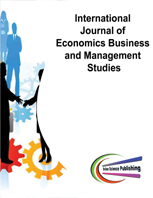The Impact of Urbanization and Industrialization on Bank Development: Evidence from the Gambia
DOI:
https://doi.org/10.20448/802.71.16.26Keywords:
Bank development, Urbanization, Industrialization, Autoregressive distributed lag, Fully modified ordinary least square, The Gambia.Abstract
The aim of the paper is to investigate the extent to which urbanization and industrialization affect bank development in The Gambia. To achieve the objective of this research, the Autoregressive Distributed Lag (ARDL) is employed and to check the robustness of th results, the Fully Modified Ordinary Least Square (FMOLS), Dynamic Ordinary Least Square (DOLS), Canonical Cointegrating Regression (CCR) and VECM Granger Causality are employed on time series data from 1990-2017. The results revealed that urban concentration has a positive impact on banking sector development of The Gambia both in the short and long run. Conversely, industrialization has a significant negative association with bank development in the short run, but insignificant in the long run. Furthermore, the results from the Granger Causality technique revealed a unidirectional relationship moving from both urbanization and industrialization to bank development. Urbanization should be encouraged, as urban development leads to bank development and consequently the banking sector accounts for 90% of the financial industry in The Gambia, which can promote economic growth. Furthermore, the manufacturing industries should increase their level of partnership with the banks in order to ease their financial distress and increase productivity.




